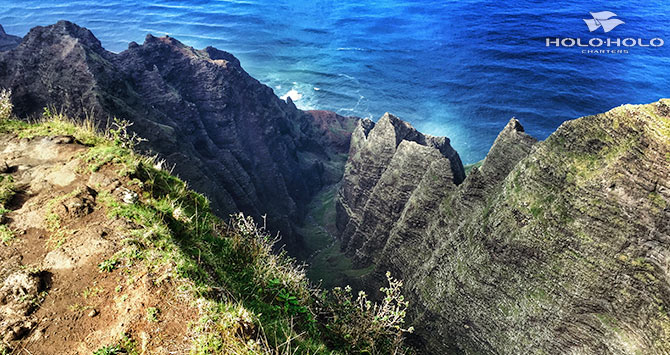History of Awa’awapuhi
As we’re cruising along the Napali Coast on one of our Kauai boat tours, your captain will point out a narrow, steep-sided, and majestic valley that extends from the sea to its headwaters on the south end of Kahuama’a Flat, in the mountains. In this valley, on both sides of the stream, are the remains of former Hawaiian homesites and taro terraces, ranging from two to four feet high. This emerald valley is beautiful, bountiful and it has a great story.

The name Awa’awapuhi means “eel valley” because, according to legend, it was carved by a large freshwater eel (puhi) named Kuna. Kuna the freshwater eel was swimming along the Napali Coast, looking for a new home on Kauai. For whatever reason, he decided to explore this particular area, slithering up the cliffs and carving the valley that we see today. This work was exhausting for Kuna the freshwater eel, and after a time, he became sluggish and feel asleep on the mountainside.
Meanwhile, a group of native Hawaiians were crossing through the area, on their way from Kalalau to Waimea. When the group came upon Kuna, the sleeping freshwater eel, they poked and prodded him and got no reaction. So, they decided to make a meal of him– naturally.
They tried and tried to curl Kuna so he would fit into a round cooking pit but the large eel was stiff and straight, so they ended up lining his body with rocks, piling firewood on top, and setting it on fire.
This woke Kuna right up, and he was angry! So angry, he ate all of the people and slithered back out to sea.
The two parallel lines of stones can still be seen today, making the length of Kuna, and the area is named Kalua Puhi for “eel pit.”
Another way to experience this beautiful and legendary valley is by hiking the popular Awa’awapuhi Trail, from Kokee State Park. The trail is a moderately difficult, six-mile, out-and-back adventure that provides excellent viewing of flora and of the coast.
